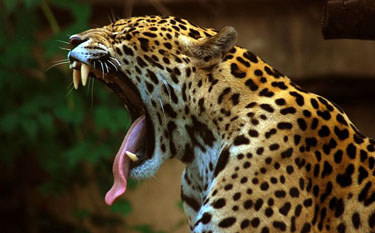Does sex matter in wildlife habitat preferences?
 Mammals
Mammals  Jaguar (Panthera onca). Credit, Marcus Obal.When it comes to the habitat preferences for certain species of wildlife, sex does matter.
Jaguar (Panthera onca). Credit, Marcus Obal.When it comes to the habitat preferences for certain species of wildlife, sex does matter.
As a new study on jaguars in the Maya Forest of the Yucatan Peninsula shows, habitat models that do not discriminate between the preferences of males and females could give misleading information with bad consequences for conservation efforts.
Researchers captured 3 male and 3 female jaguars and attached GPS collars to track their movements. While both males and females preferred tall forest, females also preferred short forest, which males avoided. Meanwhile females avoided human disturbance such as agricultural land and roads, while males displayed no avoidance of roads and periodically ventured into low-intensity agricultural areas.
Habitat preference models that looked at all 6 cougars together without consideration for differences by sex were unable to detect the negative impact of roads and agricultural land, blurred the distinct forest preferences and underestimated the overall fragmentation of habitat.
According to Dalia Amor-Conde and the other study authors, this is potentially problematic because habitat modeling rarely distinguishes between male and female preferences. This could lead to bad outcomes for conservation because habitat modeling is used to identify critical areas for protection and potential negative impacts from development.
In the case of the jaguar which is the least studied of the big cats and has lost 46% of its historic range, the gender specific modeling shows that plans to build a major highway through the Mayan forest between Guatemala and Mexico is likely to be even more damaging than previously thought.
The authors concede that their sample size was small - only 6 individuals - which opens up potential for sampling bias, though they contend that the results suggest that it is unlikely that this has occured here.
The researchers hypothesize that female jaguars prefer short forests because greater prey abundance and dense cover make these areas better for rearing cubs. Females may experience increased mortality and reduced reproductive success near roads leading to avoidance.
Meanwhile, male jaguar tolerance for agricultural areas may explain the more frequent occurrence of male predation of livestock. The authors write,
"Sex-specific models more finely resolved the complex habitat requirements of these large carnivores, potentially leading to more effective conservation policies."
--Rob Goldstein
Conde, D., Colchero, F., Zarza, H., Christensen Jr., N., Sexton, J., Manterola, C., Chávez, C., Rivera, A., Azuara, D., & Ceballos, G. (2010). Sex matters: Modeling male and female habitat differences for jaguar conservation Biological Conservation DOI: 10.1016/j.biocon.2010.04.049




Reader Comments